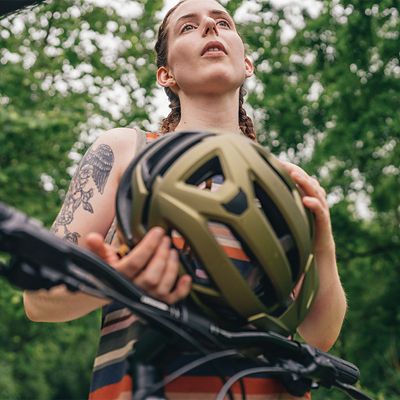
With the rise of direct-to-consumer bike brands, you may find yourself putting together a new bike for the first time. It can be intimidating, especially upon completion as you bomb down a hill, wondering if all parts are connected and tightened correctly. However, with the right information, tools, and can-do attitude, you’ll be going from unboxing to ripping down the road in no time. Anyone can build a bike that they can feel confident and safe on. Here’s how.
Do: Have the Right Tools
Though most new bikes arrive in some degree of “pre-assembled” shape, depending on the number of pieces and whether it has an included tool kit, you’ll likely only need a few tools to start your bike-building journey: a set of metric hex wrenches (aka Allen keys), a torque wrench capable of single digit Newton-meter readings, and bike grease (or carbon paste if your bike is made of carbon fiber). You’ll also need a rag handy for any grease cleanup, a pair of scissors for any unpackaging, and a pump for tire inflation.
Don't: Tear Your Box Apart in Excitement
Many parts for a bike are small, and specific hardware like screws can easily slip between the cracks or beneath a cupboard. Open carefully and organize the bike parts, being careful not to cut any wires or damage parts while removing packaging.
Do: Protect Your Seat Post
Before you insert your seat post, be sure to lubricate the inside of the tube where it sits. If it is metal, apply a light layer of grease. If it is carbon, apply a light coating of carbon assembly paste. A lubricating layer will protect the pieces from rubbing and wearing.
Don’t: Guess on Tightness
Most bikes will tell you exactly how tight each screw needs to be in a measure of Newton-meters (Nm). Following these settings exactly will keep you safe with each part tightened properly, without risking ruining your investment by over-tightening and bending or cracking any part of your bike.
Do: Tighten Your Handlebars in the Right Order
First, attach your handlebars to the stem by removing the stem faceplate, sliding your handlebars in, and replacing the faceplate. Tighten each bolt on the faceplate progressively, crisscrossing from top to bottom and side to side, so that the plate tightens equally, with an even gap on the top and bottom. If the stem is loose on the vertical steerer tube, next tighten the screw head that points straight up the tube and, finally, align your handlebars with the front wheel and tighten the two bolts closest to the rider that secure the handlebars, stem, and wheel in position.



